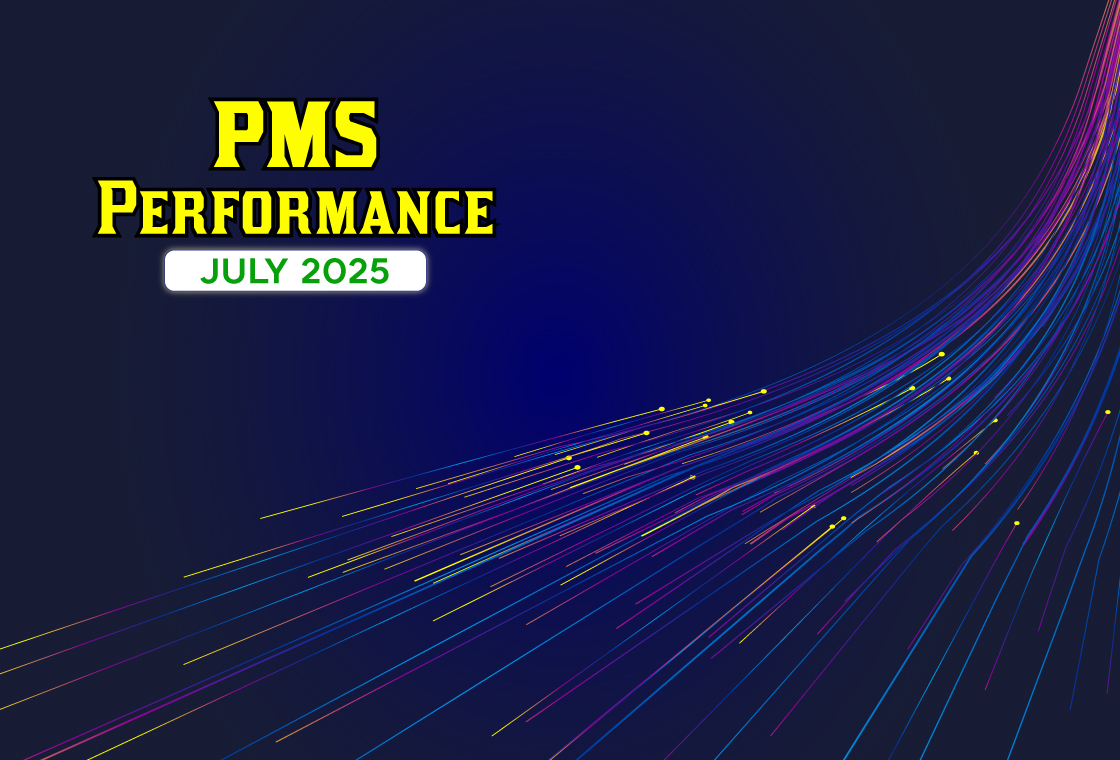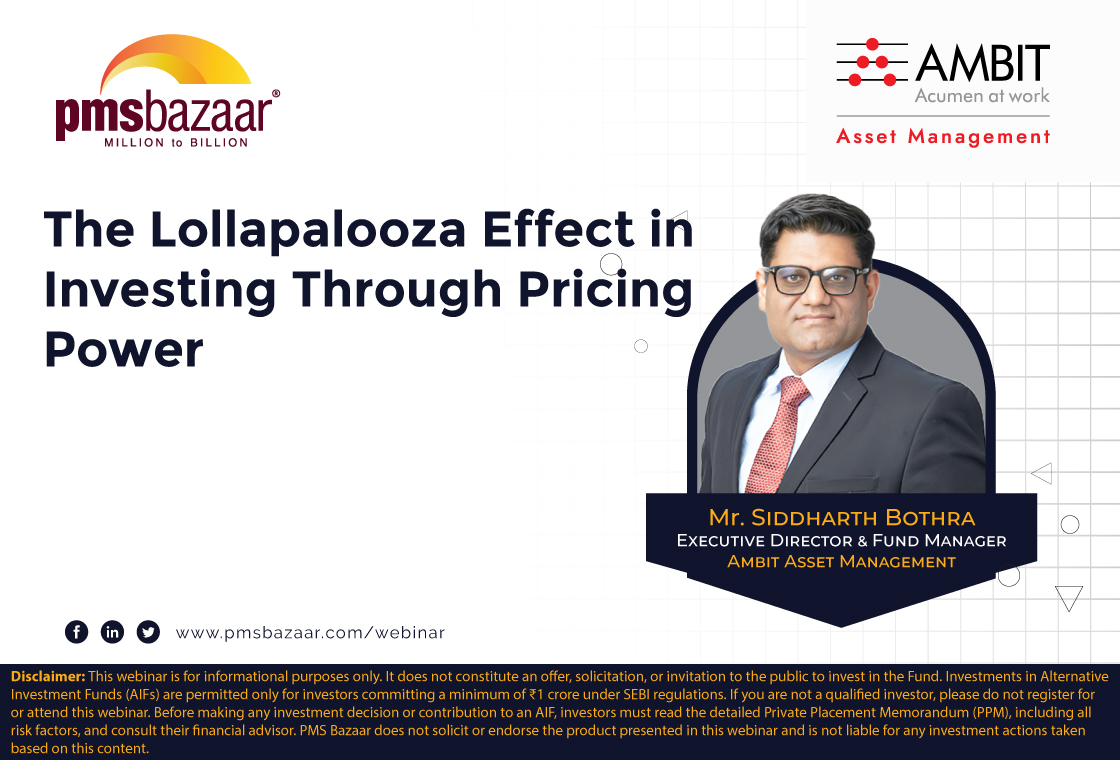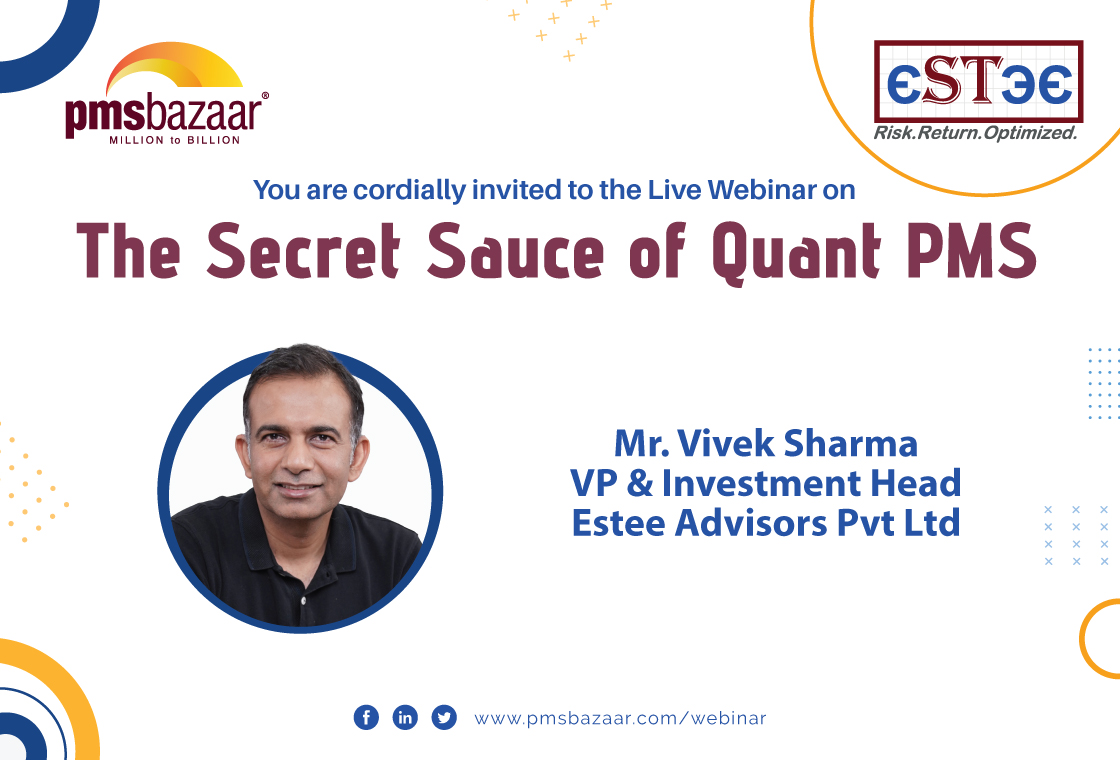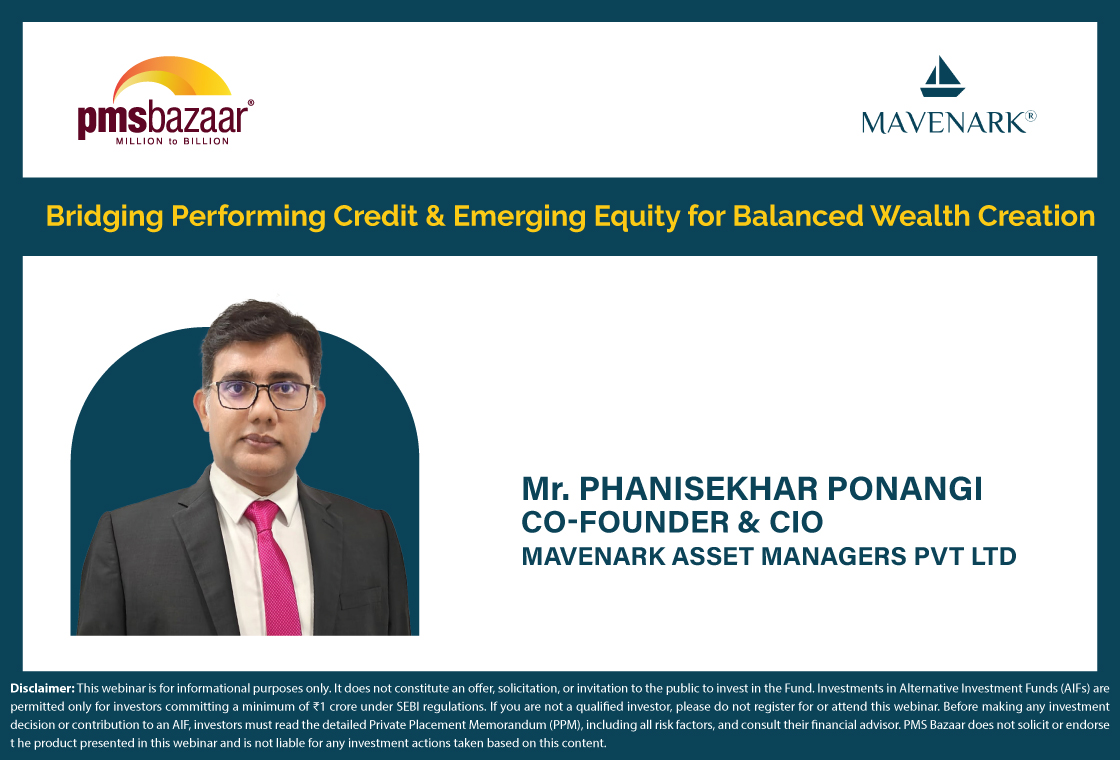Singularity AMC, a leading provider of capital and differentiated market access for high-growth assets, shares its perspective on the government’s newly announced ₹10,000 crore Fund of Funds (FoF) and its potential to reshape India’s startup investment landscape.

In an exclusive discussion with PMS Bazaar, Singularity examines how this initiative could drive greater rupee capital participation, impact AIF fundraising, and support deep-tech and manufacturing startups.
Backed by industry veterans, Singularity AMC undertakes private equity investments across growth to late-stage Indian companies. Singularity’s vision is to be a value-added operator minded investor to visionary entrepreneurs building great companies. The firm is mentored by Madhusudan Kela and led by Yash Kela. Yash strengthened the firm by inducting Mithun Sacheti as a General Partner and Sandeep Bapat as Senior Partner & Co-CIO. Mithun founded Caratlane and scaled the business into India’s leading omni channel jewellery business before selling it to Titan. Sandeep is an IIT Bombay- Harvard Alumni and has worked with Hillhouse Capital & Blackstone spanning 15 years. Singularity AMC has built a strong senior team with a blend of public markets, private equity, and operational experience. Leveraging this deep expertise in capital markets and scaling consumer internet businesses, the firm is positioning itself as the preferred partner for growth-stage founders.
The conversation with Ms. Purvi Parkeria and Mr. Vikrant Rajvanshi, Fund managers for Singularity Fund of Funds II, a Category II AIF, explores Singularity’s investment approach in secondaries, highlighting strategies for mitigating J-curve risks, navigating pricing inefficiencies, and sustaining alpha generation in private equity and venture capital. Read on for an in-depth analysis of how these developments will influence India’s evolving investment ecosystem.
1. How do you see this initiative influencing the startup investment landscape in India? Will it encourage more rupee capital participation, and how might it impact fundraising dynamics for AIFs?
The FoF of INR10000 cr announced in this budget is a follow on to the one announced as a part of Start-up India Policy in 2016 by the Prime Minister. The purpose was to encourage newer Domestic Fund Managers to enter the space and replace Dollar Capital with Rupee Capital. The initiative gave back much better results than expected. It was expected that the Fund of Fund for Start-ups (FFS) would create a multiplier effect and help AIFs raise 5x of the commitment from FFS. However, as per DPIIT, the initiative helped AIFs raise more than INR 91,000 crore of capital. Buoyed by its success, the Government has now announced another Fund of same size that shall focus on Manufacturing and high-tech Start-ups. There is another Deep-tech Fund in the offing. These measures are bound to have a much larger effect than the first FFS as this one is expected to be of longer tenure and focused more towards the manufacturing activities than those start-ups who have an asset light service sector model. Traditionally, the sanction from FFS gave great comfort to other Institutional Investors/ HNIs/ Family Offices in considering the AIFs for investment. This trend is bound to continue and lead to enhanced rupee capital participation. Government has been bringing out policy changes towards this end and it is bound to help the overall ecosystem.
2. Given India’s emphasis on deep-tech and AI, how should the new Fund of Funds structure its strategy to ensure capital availability aligns with late-stage funding gaps, exit pathways, and broader ecosystem development? Could it lead to an over-concentration of capital in select sectors?
Alongside the fresh FoF allocation, Government has also announced a new FoF focused towards Deep Tech Investments. This shall support newer R&D initiatives and help the technocrats who are working in developing technologies. As we know this requires patient capital and standard AIFs are not suited for such kind of investments as the gestation period is too long. The new targeted FoF should bridge this gap. There has also been news of a Fund of Funds specifically for Secondary Investments. There has been a persistent demand from the AIFs that while the Government helped fund the early-stage Start-ups, the AIFs could not help their investee companies once there was a requirement of Late-Stage Capital. The focused FoF, as and when announced, shall fill the gap of late-stage funding and provide support for end-to-end growth of a start-up.
The Government FoF have been Sector-Agnostic and there has not been any sectoral concentration till now. It is expected that the same trend shall continue.
3. With a pre-carry IRR of 20.3% and a TVPI of 1.7x (in FOF-1), how do you ensure continued alpha generation while mitigating J-curve risks, particularly when purchasing secondary interests in mature PE/VC funds?
To ensure continued alpha generation while mitigating J-curve risks when purchasing secondary interests, the Singularity Fund of Funds II will:
1. Focus on high-quality GPs / funds:
- Prioritize secondary interests in funds with strong historical performance, demonstrating the ability to generate consistent returns. Look for funds with proven exit strategies, high-quality portfolios, and an experienced
- management team.
- Prefer funds that are closer to their exit horizon, as they are more likely to have significant unrealized value and provide liquidity opportunities
2. Emphasise on Portfolio Quality and Residual Value:
- Examine the underlying portfolio companies, assessing their stage in the life cycle, growth trajectory, and likelihood of exit. The fund should have a relatively stable mix of investments nearing exit or with clear value creation milestones in place.
3. Structured Secondary Purchases in case of LP led secondaries:
- Seek opportunities in more mature funds where the majority of capital has already been deployed. This allows for the potential to minimize the J-curve effect as the fund has already experienced most of the capital calls and is in the distribution phase.
- Purchase secondary interests across different funds and strategies to mitigate the concentration risks and exposure to the J-curve of individual funds.
4. Portfolio Monitoring and Active Management:
- Actively track the performance of the underlying assets in the secondary portfolio. Work closely with GPs to stay updated on exit opportunities, expected valuations, and any risks that might impact future returns.
- Engage with GPs /fund managers to potentially influence strategic decisions on exits and portfolio optimization. This can improve DPI of the fund.
(The numbers quoted in your question are with respect to FoF I (which is basically prop investments made from 2016 onwards) and FoF II has made a few investments and the MOIC stands at 1.0x).
4. Given the significant allocation to secondaries and co- investments, how do you navigate pricing inefficiencies and ensure that acquired assets are truly at a discount to intrinsic value rather than just benefiting from temporary market dislocations.
By balancing the various elements (discussed below) and keeping a disciplined approach to pricing, the fund will navigate secondary market pricing inefficiencies and ensure that the acquired assets are prudently priced. Industry cycles could provide an opportunity, but business quality should not be compromised.
Navigating pricing inefficiencies in a secondaries fund requires a combination of deep market knowledge, thorough due diligence, and careful risk management. The fund will analyse short terms vs long term intrinsic discounts, temporary vs fundamental inefficiencies. However, the fund will not invest into deeply discounted assets that have structural / financial issues.
Thorough diligence at cash flow level, valuation multiples, business metrics will be done.
Perform stress testing and sensitivity analysis on the asset’s future performance under various economic or market conditions. This helps determine if the discount you're getting truly reflects a bargain, or if it’s merely an artifact of temporary volatility. The fund will take into consideration different market scenarios (bull, bear, or stagnant) and how each would impact the asset's intrinsic value.
Disclaimer: Investments in Alternative Investment Funds (AIFs), including Fund of Funds (FoF) under Category II AIFs, are subject to market risks, liquidity constraints, and regulatory frameworks as prescribed by SEBI. These investments are intended for sophisticated investors with a high-risk appetite and may not be suitable for all. Past performance does not guarantee future returns, and investors are strongly advised to conduct independent due diligence and seek professional financial advice before investing. Do not consider it as solicitation neither from singularity nor pmsbazaar
Recent Blogs

Smart Beta Strategies: What Investors Should Know Before Investing
This article is authored by Vivek Sharma, VP and Head of Investments at Estee Advisors

Dynamic Investing Approach in Different Markets
This article is authored by Rishabh Nahar, partner and fund manager, Qode Advisors LLP

The Accreditation Edge: Unlocking the Power of Accredited Investors to make Diversified Investments
PMS Bazaar recently organized a webinar titled “The Accreditation Edge: Unlocking the Power of Accredited Investors to make Diversified Investments,” which featured Mr. Archit Lohia, Founder and CEO of Career Topper Online Education Pvt. Ltd. This blog covers the important points shared in this insightful webinar.

PMS performance hit by broad market slump in July; Thematic strategies buck the trend
Of 427 equity PMSes, only 61 gained; Debt offerings showed positive returns. July 2025 proved to be a testing month for Portfolio Management Services (PMS) investors, with broad-based declines across most asset classes.

July tests AIF resilience; Long-short strategies lead relative gains game
Only 44 of 137 AIFs ended positive; long-only funds averaged –1.15%, while long-short peers limited losses to –0.29%

The Lollapalooza Effect in Investing Through Pricing Power
PMS Bazaar recently organized a webinar titled “The Lollapalooza Effect in Investing Through Pricing Power” which featured Mr. Siddharth Bothra, Executive Director and Fund Manager, Ambit Asset Management. This blog covers the important points shared in this insightful webinar.

The Secret Sauce of Quant PMS
PMS Bazaar recently organized a webinar titled “The Secret Sauce of Quant PMS,” which featured Mr. Vivek Sharma, VP & Investment Head, Estee Advisors Private Limited.

Bridging Performing Credit and Emerging Equity for Balanced Wealth Creation
PMS Bazaar recently organized a webinar titled “Bridging Performing Credit and Emerging Equity for Balanced Wealth Creation,” which featured Mr. Phanisekhar Ponangi, Co-Founder and CIO, MavenArk Asset Managers Pvt Limited. This blog covers the important points shared in this insightful webinar.

